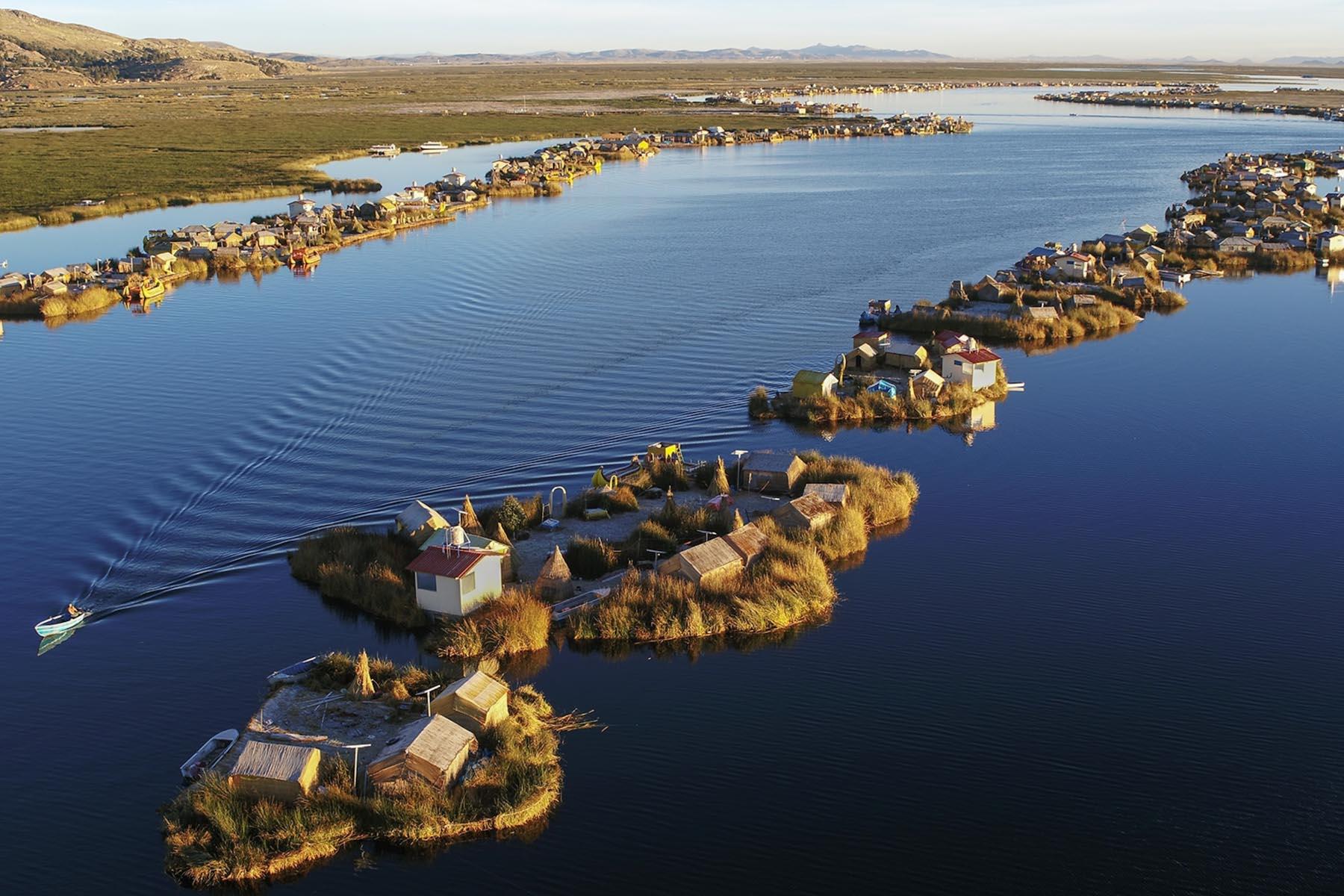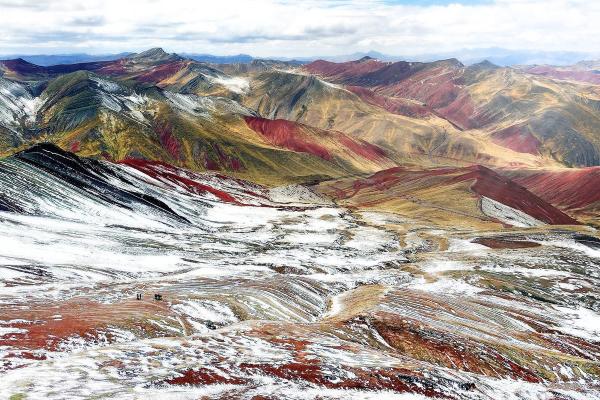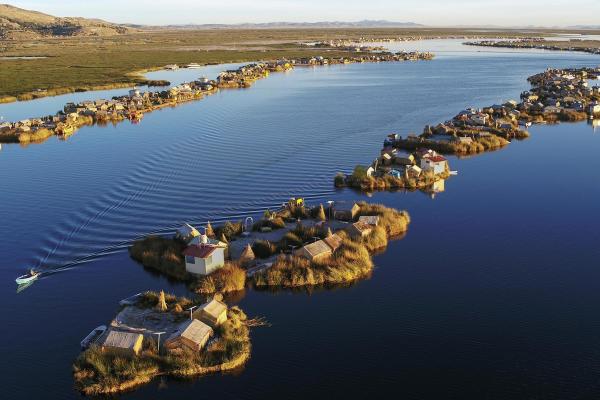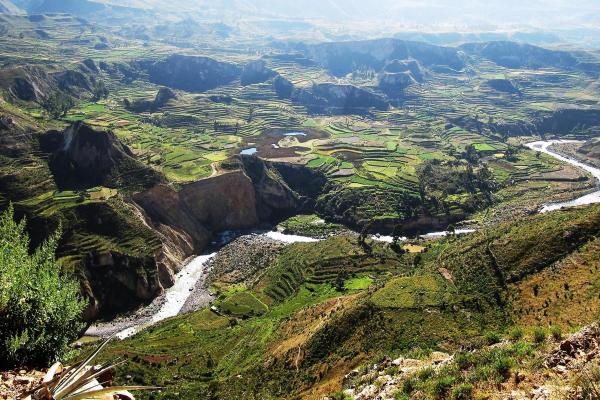Peru Highlands
$1995.00/From
Peru has various climates, cultures and foods, enjoy the variety of traditions which all have their special history. Lima, Arequipa, Puno, and Cusco are cities of great historical, religious and culinary wealth, with have been home to many great cultures, including the less known pre-Inca civisilisations.
Quick Itinerary
- Day 01: Arrival in Lima
- Day 02: Cusco
- Day 03: Guided tour of the Sacred Valley of the Incas.
- Day 04 - 07: Lares trek to Machu Picchu (Inca Trail Trek)
- Day 08: Cusco
- Day 09: South Valley
- Day 10 - 11: Tour on Lake Titicaca
- Day 12: Puno
- Day 13: Arequipa
- Day 14 - 15: Trekking to Colca Valley and Colca Canyon
- Day 16: Arequipa
- Day 17: Lima
- Day 18: Departure day
Included Highlights:
- Visit to the Cusco City
- Guided tour of Sacred Valley
- 3 days hike with professional guide, chef, muleteer and llama
- Train to Machu Picchu
- Guided tour of Machu Picchu
- South Valley guided tour
- Tourist transport in the Sun Route
- Visit and walk around the Puno city
- Explore and guide tour of Lake Titicaca
- Share the tradition and cultural of Lake Titicaca
- Stay on the homestay
- Explore the white City, Arequipa
- Guided tour of the Colca Canyon
- Visit the world's deepest canyon
- Crew
- Accomodation
- Meals
- Transportation
- A Travel Tour Group representative in Lima, Cusco, Puno, Arequipa and professional guide
- Hotel 3 star (14 nights), Camping (02 nights), Homestay (01 night)
- 07 Lunches, 04 Dinners, 03 afternoon tea, 16 Breakfasts (Allow USD 200-250 for meals not included
- Domestic flights, private transportation, van, train, motorboat.
Tour Plan
Day 1: Lima
Arrival to the city of Lima, there are no planned activities.. When will arrive to airport, please seek your name, a Tierras Vivas representative will wait for you and will take to the hotel.
Known as the City of Kings, Peru’s capital city Lima was founded by Francisco Pizarro on the Day of the Three Kings (Epiphany) in 1535. The Plaza de Armas is the heart of old Lima, and it is here you find the Cathedral, Government Palace and Archbishop’s Palace.
Day 2: Cusco (B)
Transfer to the airport for the flight to Cusco (the flight usually departs early). In Cusco meet your guide and transfer to your hotel. The day is free to relax and explore the fascinating city of Cusco, and to acclimatize to the altitude.
Cusco is the continent’s oldest continuously inhabited city, and the hub of the South American travel network. The city attracts travellers who come not just to visit a unique destination but also to experience an age-old culture very different from their 20th century way of life; one could easily spend a week just in and around the area. Inca-built stone walls line most of the central streets and you don't have to go far to see other major Inca ruins. It is a city steeped in history, tradition and legend.
Day 3: Sacred Valley (B, L)
Travel with our local guide through the Sacred Valley of the Incas. An important source of food for the Inca, the Sacred Valley is a lush agricultural region that continues to supply the city of Cuzco with much of its produce. Visit the impressive Pisac ruins and the colourful artisan market (market days only). The day trip finishes in the picturesque village of Ollantaytambo, site of another large Inca ruin. Here we catch our breath and prepare for the hike ahead.We spend the night in this small town before heading out for the start of the hike the next morning.
Day 4 - 7: Lares trek (4B, 3L, 3D, 2A)
Leave early in the morning and travel by bus through the Sacred Valley. Spend the morning soaking in the medicinal waters of the Lares Hot Spring. Continue upwards through the valley and arrive at the indigenous community of Huacawasi. Cross the challenging 4100m Condor Pass, with stunning views of Mount Veronica (5750m,) then descend gently to beautiful Ipsaycocha Lake, our last campsite. Finally follow the trail downhill past stunning lookouts to Huilloc. Take the evening train to Aguas Calientes, where we spend the night.
NOTE: Those passengers not able or interested in the hike spend 2 days in Cuzco, then travel by train to Aguas Calientes, where they overnight. Next morning they take the bus to the Machu Picchu entrance and rendezvous with the hikers at the ruins. If you decide not to do the hike we need to know prior to your departure in order to obtain train tickets. There is an additional fee for any changes made once Inca Trail permits are confirmed. This fee may vary depending on the changes that are made to your itinerary. Please advise your agent or Travel Tour Group.
Day 8: Cusco (B)
Cuzco is considered the mecca of Peru. This gorgeous colonial town offers nearby ruins, cobble-stoned streets, museums, churches and a lively atmosphere.
Every year Cuzco attracts thousands of travellers who come to delve into its noble but tragic past. It is the perfect base for optional explorations around the city and area as well as a range of outdoor activities. Relax and explore this fascinating city, and take time.
Cuzco’s numerous colonial churches are one of the city’s most common sights. The Cathedral was started in 1559 and took 100 years to build; it is also one of the city’s greatest repositories of colonial art. Immediately in front of the entrance is a vault containing the remains of the famous Inca historian, Garcilaso de la Vega. Also worth visiting are the churches of La Compañía, La Merced and San Francisco.
While most ruins are just outside of the city, the main ruin within is that of the Coricancha, once the Inca Empire's richest temple. Today the ruin forms the base of the colonial church of Santo Domingo. During Inca times this temple was literally covered with gold, but within months of the arrival of the first conquistadors this incredible wealth had all been melted down. It is left to the individual imagination to envision the magnificence of the original structure.
There are several good museums in Cuzco, including the Archaeological Museum, which also houses a small art museum, the Regional History Museum and the Religious Art Museum. Our best advice for exploring Cuzco is to wear a comfortable pair of shoes, arm yourself with a city map and set off to explore!
Day 9: South Valley (B, L)
Tourist bus to Puno and will do South Valley (Sun route), the first stop is the San Pedro Church of Andahuaylillas is the major attraction for visitors and because of the quality of the art work is considered as the “Sistine Chapel” of America. It was constructed for the Jesuits at the end of the 16th and the princes of the 17th century. Its´ architectural structure is typical for small towns´ churches. Its´ walls are wide, typical for the colonial buildings, made with sun dried bricks of mud, a facade decorated with murals and two stone columns projected towards the main entrance. Although its´ architecture is relatively modest, the decoration of its´ interiors is the most impressive of the building.
After this we will continue to the old village of Pikillacta. This was one of the more impressive regional centers of the Wari culture, seated in Ayacucho, and which was occupied by the Incas through the years. Today it is a national archeological park of great importance. The word Pikillaqta is a made up Quechua word, meaning lousy town (piki = lousy, llaqta = town), although it is also called “city of the fleas”. The constructions of Pikillacta exist of more than 200 kanchas (apartments), 504 golgas (warehouses) and other constructions. The city must have accommodated a population of approximately 10 thousand people.
Some investigators suggest that in the Inca times, Pikillacta was a city for “mitimaes” (groups of people or tribes who were being transferred from place to place). Then will go to Raqchi (the Temple of the God Wiracocha), a last stop in La Raya, where is the frontier to Cuzco and Puno, before arriving to Puno.
Day 10 - 11: Titikaka Lake (2B, 2L, 1D)
We board our comfortable boat to explore Uros, Amantani, Taquile Island. We stop at various islands to enjoy the lake's scenic splendor and to meet the friendly people of these communities. Titicaca is also the largest lake in the world above 2000m, and the views from both Amantaní and Taquile Islands are stunning. Our first stop on Lake Titicaca is the floating islands of the Uros people. The Uros began their unusual floating existence centuries ago in an effort to isolate themselves from the Colla and Inca tribes. Sadly, the Uros language has died out, and today they speak Aymara due to intermarriage with Aymara-speakers. Today about 300 families live on the islands, however their numbers are slowly declining.
The Totora reeds that grow in the shallows of the lake are used for making everything from the islands themselves to the model boats that the islanders sell. The islands are made up of layers upon layers of reeds; as the layers closest to the water start to rot, they are replaced with fresh reeds on top. The reeds are also used to build their boats, which if constructed well will last up to 6 months.
Day 12: Puno (B)
Located at 3830 m above sea level, Puno is the highest night stop on the tour. As a result the weather can be extreme with very cold nights and a strong sun during the day. Puno is also known for its wealth of traditional dances: there are up to 100 different varieties, usually performed in the street processions celebrating Catholic feast days. Today is a relaxing day, free time to explore Puno, visit its market, buy souvenirs, take optional activities, and get ready for one last night in the city.
Day 13: Arequipa (B)
Peru’s second most important city after Lima, Arequipa maintains a traditional colonial style and more laid back pace in comparison with the capital. Sitting at 2325 m (7626 ft) above sea level and surrounded by the Andes mountains, this delightful colonial town is well worth a visit. Arequipa was built from a very light coloured volcanic rock called sillar, so older buildings dazzle in the sun, giving the city its nickname, “the White City.” The main plaza with its cafés and nearby cathedral is a top draw for visitors.
Those with an interest in history and architecture may take an optional visit to the Convent of Santa Catalina, offering a brief respite from the outside world and a unique view into a by-gone way of life. Spectacular mountains surround Arequipa, the most famous of which is El Misti Volcano, at 5822 m (19096 ft) with its beautiful snow-capped peak.
Day 14 - 15: Colca Cayon (2B)
Travel a rough, rutted road through high plains flanked by extensive Inca and pre-Inca terracing that goes on for kilometres. Our first stop is Chivay, a picturesque village near the Colca Canyon—one of the deepest canyons in the world. Take a dip in the local hot thermal baths, watch live Andean music at a peña or go for a llama steak. Two nights gives us time to take short hikes to acclimatize to the altitude. Take a tour around the canyon, stopping in fascinating villages and at “miradors” (scenic lookouts), where with a little luck we see Andean Condors soaring over majestic the Andes mountains. Other unusual animals we may see in the Andean landscape include 3 different species of camelids: alpaca, llama and vicuña.
Day 16: Arequipa (B)
Today is a relaxing day, free time to explore Arequipa, visit its market, and buy souvenirs. You may visit the peaceful Santa Catalina Monastery or watch the local activities, get ready for one last night in the city.
Day 17: Lima (B)
Lima, there are many fine museums in and around the city, including the Museo Rafael Larco Herrera, which houses an equally impressive collection of pottery, mummies and textiles from the Paracas and Nazca cultures. The more affluent districts of Miraflores, Barranco and San Isidro, which are on the coast, offer good nightlife and cafés all within walking distance. Limeños (Lima’s residents) are friendly, and the city is filled with excellent restaurants; seafood lovers in particular should be sure to try a ceviche, for which Lima is well known.
Day 18: Departure day
Transfer to the airport and departure day of Peru deep
Included & Excluded
Details about services not included and details not included in our packages, if you have any questions please contact us.
- Airport arrival and departure transfer.
- Accommodation: Hotel 3 star (14 nights), Camping (2 nights), Homestay (1 night).
- All entrance fee according to itinerary.
- Profesional guide throughout as per itinerary.
- Meals: 07 Lunches, 04 Dinners, 03 Afternoon tea, 16 Breakfasts.
- Muleteer and Llama for carrying all heavy gear and 7 kg passenger equipment.
- Chef.
- Camping equipment: Double tent and sleeping roll mat.
- Sleeing bag (-5 grades).
- Domestic flights (LIM - CUZ/ AQP -LIM).
- Tourist transport along the route.
- Tourist train EXPEDITION round trip to MachuPicchu.
- Tourist bus up and down to MachuPicchu.
- Motorbaot in the Titikaka Lake.
- Pre & post tour and accommodation
- International flight and departure tax
- Meals not detaileds
- Travel insurance
- Tips, baggage portage and other extra not specified
Meals budget:Allow USD 200 - 250 for meals not included
Single room: Please note that if you have booked the "Single Room" option for this tour, you will receive your own single room or tent for all night stops and including to the Lares trek.
Local flights:All local flights are included in the cost of your tour unless otherwise noted. It is important that we have your passport information at the time of booking in order to process these tickets. Internal flight tickets are issued locally and will be given to you prior to the flight departure.











